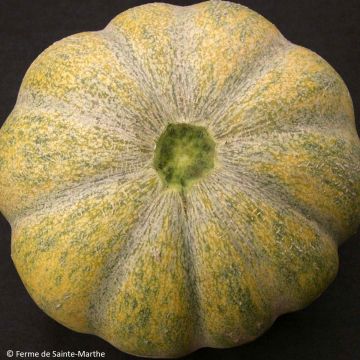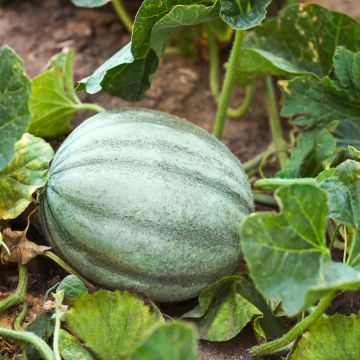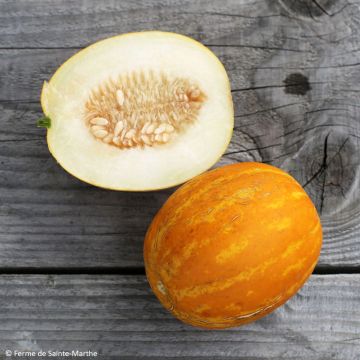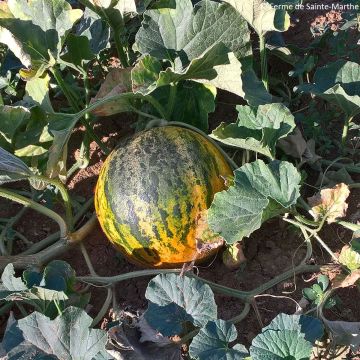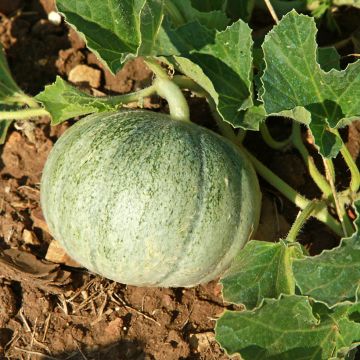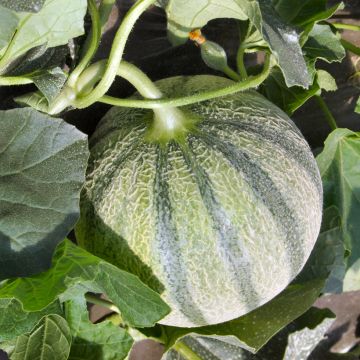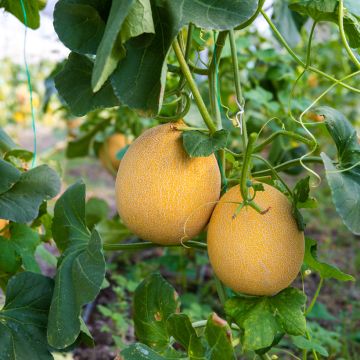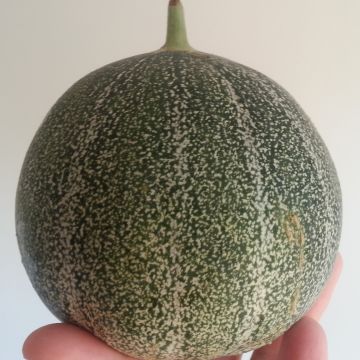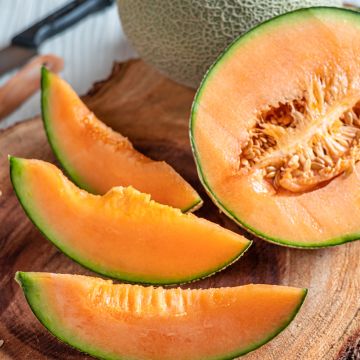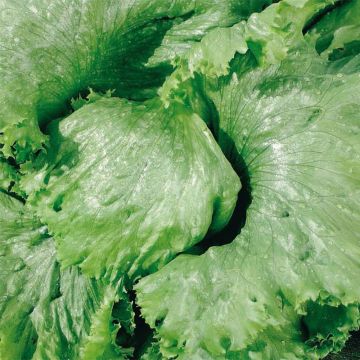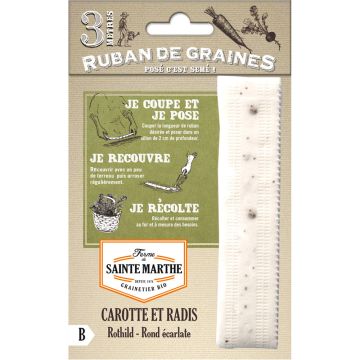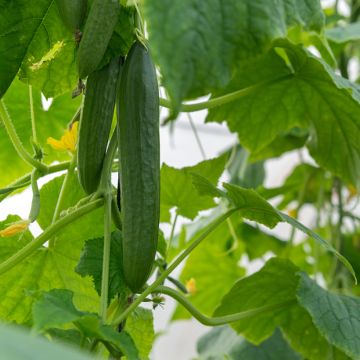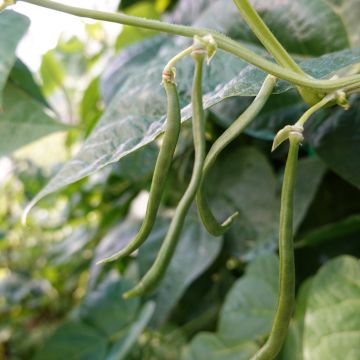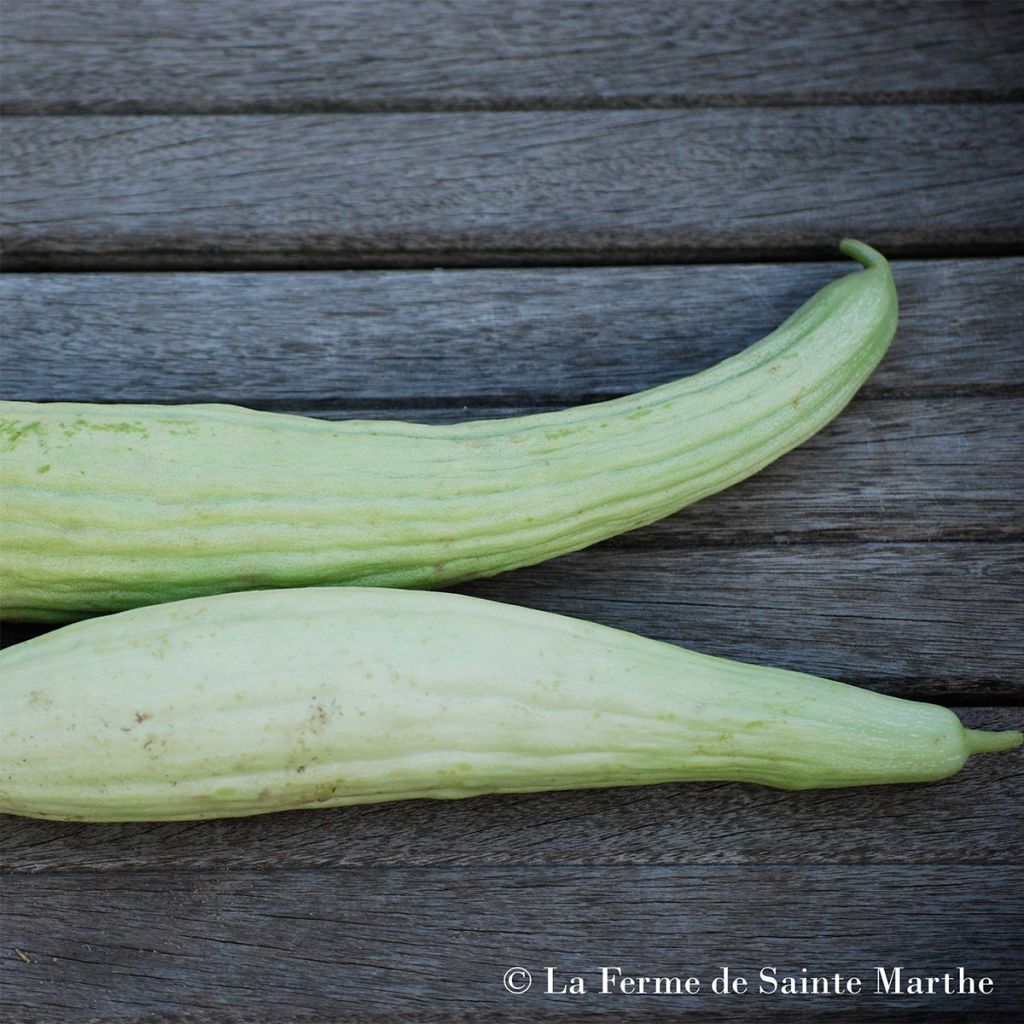

Armenian Cucumber - Ferme de Sainte Marthe seeds


Armenian Cucumber - Ferme de Sainte Marthe seeds
Armenian Cucumber - Ferme de Sainte Marthe seeds
Cucumis melo var. flexuosus Concombre Arménien
Muskmelon
The seeds have germinated well and the shoots seem to be developing nicely. Only time will tell how they will progress.
CHRISTOPHE R., 23/05/2017
Special offer!
Receive a €20 voucher for any order over €90 (excluding delivery costs, credit notes, and plastic-free options)!
1- Add your favorite plants to your cart.
2- Once you have reached €90, confirm your order (you can even choose the delivery date!).
3- As soon as your order is shipped, you will receive an email containing your voucher code, valid for 3 months (90 days).
Your voucher is unique and can only be used once, for any order with a minimum value of €20, excluding delivery costs.
Can be combined with other current offers, non-divisible and non-refundable.
Home or relay delivery (depending on size and destination)
Schedule delivery date,
and select date in basket
This plant carries a 6 months recovery warranty
More information
We guarantee the quality of our plants for a full growing cycle, and will replace at our expense any plant that fails to recover under normal climatic and planting conditions.
Description
Armenian cucumber is a rare and original heirloom variety (that actually belongs to the melon family!). It produces long, thin, ribbed light green fruits (5-10 cm in diameter). Texture is crunchy, sweet and refreshing without a bitter aftertaste. Armenian cucumbers are best eaten young. Sow from March to May and harvest from June to September.
Cucumber is one of the most popular summer vegetables. Both refreshing and low in calories, it is perfect added to summer salads and cocktails, sliced in sandwiches and blended into smoothies. Cucumber comes in an array of colours, shapes and sizes. Classic slicing varieties are long and dark green, lunchbox varieties are short and bumpy, Armenian cucumbers are light green and lemon cucumbers are round and yellow! Some are suitable for growing outdoors, others need to be grown under cover in a polytunnel or a greenhouse.
Cucumbers do well in light, loose, nutrient-dense soils with plenty of sunlight and temperatures ranging from 18 to 22°C. Cucumbers are moisture-loving plants that need watering regularly.
Harvesting: Cucumbers are harvested when they are full-sized, before they start to turn yellow and bitter. Regular harvests will stimulate fruit production. They are generally ready to harvest about 3 months after sowing, from June to September.
Storage: Cucumbers will stay fresh for several days in the refrigerator. They can also be pickled or lacto-fermented for later use.
Good to know: Cucumber plants are prone to powdery mildew (a fungal disease that causes a white down to form on the surface of the leaves). When watering, try to avoid getting water on the leaves or flowers. When growing cucumbers in a greenhouse or polytunnel, make sure it is well-ventilated. Good companion plants include lettuce and beans. Avoid growing your cucumbers too close to potatoes and tomatoes.
Even if the vegetable garden is first and foremost a place for growing great quality veg, it’s always a good idea to leave a bit of room for flowers. Growing flowers alongside your vegetable plants will make your general gardening experience more enjoyable and is a great way to attract pollinators and repel garden pests! Flowers such as gaillardia, marigolds, zinnias, cosmos or nasturtiums can be sown in and around the rows of vegetables. Herbs such as dill can be very useful also. Bear in mind that some companion plants self-seed easily and can be a bit invasive (borage, chives, lemon balm etc.)
NB. Organic seeds (in French "AB" for "Agriculture Biologique") are produced from plants that aren't treated with phytosanitary products (insecticides, weed killers). The seeds do not undergo post-harvest treatment. They carry the AB label and are approved by Ecocert, an independent structure.
Report an error about the product description
Harvest
Plant habit
Foliage
Botanical data
Cucumis
melo var. flexuosus
Concombre Arménien
Cucurbitaceae
Muskmelon
Cultivar or hybrid
Annual
Other Melon seeds
View all →Planting and care
Soil preparation: melon plants like cool, well-drained soil. Prepare the soil by loosening the top 10 cm without turning it over. Melons need plenty of food and warmth to produce fruit. Fill the planting hole with manure or well-decomposed compost and mix it with the soil to prevent the roots from burning. Choose a very sunny spot with sandy, well-drained soil with a slightly acidic pH.
Sowing under cover: melons are best-suited to warmer climates. It is often a good idea to sow them in a greenhouse or propagator and to transplant them when the outdoor temperatures are more favorable. In late March, fill pots or seed trays with sowing mix and sow the melon seeds with the tips pointing down to help root development. Water lightly and keep the soil moist. Germination usually takes 14 days. When the young plants have three true leaves and the soil has warmed up (between 18 and 26°C), they can be transplanted in their final location. Make sure to leave 80 cm between each plant.
Direct sowing: in warmer climates, melons can be sown outdoors. Make sure the soil temperature is high enough before sowing (between 18 and 26°C). Then place two to three seeds in seed holes with the tips pointing downwards. Leave at least 80 cm between each seed hole. Water lightly and keep the soil moist at all times. When the seedlings have three true leaves, thin them out by keeping the strongest one.
Seedlings
Care
Intended location
Planting & care advice
-
, onOrder confirmed
Reply from on Promesse de fleurs
Similar products
Haven't found what you were looking for?
Hardiness is the lowest winter temperature a plant can endure without suffering serious damage or even dying. However, hardiness is affected by location (a sheltered area, such as a patio), protection (winter cover) and soil type (hardiness is improved by well-drained soil).

Photo Sharing Terms & Conditions
In order to encourage gardeners to interact and share their experiences, Promesse de fleurs offers various media enabling content to be uploaded onto its Site - in particular via the ‘Photo sharing’ module.
The User agrees to refrain from:
- Posting any content that is illegal, prejudicial, insulting, racist, inciteful to hatred, revisionist, contrary to public decency, that infringes on privacy or on the privacy rights of third parties, in particular the publicity rights of persons and goods, intellectual property rights, or the right to privacy.
- Submitting content on behalf of a third party;
- Impersonate the identity of a third party and/or publish any personal information about a third party;
In general, the User undertakes to refrain from any unethical behaviour.
All Content (in particular text, comments, files, images, photos, videos, creative works, etc.), which may be subject to property or intellectual property rights, image or other private rights, shall remain the property of the User, subject to the limited rights granted by the terms of the licence granted by Promesse de fleurs as stated below. Users are at liberty to publish or not to publish such Content on the Site, notably via the ‘Photo Sharing’ facility, and accept that this Content shall be made public and freely accessible, notably on the Internet.
Users further acknowledge, undertake to have ,and guarantee that they hold all necessary rights and permissions to publish such material on the Site, in particular with regard to the legislation in force pertaining to any privacy, property, intellectual property, image, or contractual rights, or rights of any other nature. By publishing such Content on the Site, Users acknowledge accepting full liability as publishers of the Content within the meaning of the law, and grant Promesse de fleurs, free of charge, an inclusive, worldwide licence for the said Content for the entire duration of its publication, including all reproduction, representation, up/downloading, displaying, performing, transmission, and storage rights.
Users also grant permission for their name to be linked to the Content and accept that this link may not always be made available.
By engaging in posting material, Users consent to their Content becoming automatically accessible on the Internet, in particular on other sites and/or blogs and/or web pages of the Promesse de fleurs site, including in particular social pages and the Promesse de fleurs catalogue.
Users may secure the removal of entrusted content free of charge by issuing a simple request via our contact form.
The flowering period indicated on our website applies to countries and regions located in USDA zone 8 (France, the United Kingdom, Ireland, the Netherlands, etc.)
It will vary according to where you live:
- In zones 9 to 10 (Italy, Spain, Greece, etc.), flowering will occur about 2 to 4 weeks earlier.
- In zones 6 to 7 (Germany, Poland, Slovenia, and lower mountainous regions), flowering will be delayed by 2 to 3 weeks.
- In zone 5 (Central Europe, Scandinavia), blooming will be delayed by 3 to 5 weeks.
In temperate climates, pruning of spring-flowering shrubs (forsythia, spireas, etc.) should be done just after flowering.
Pruning of summer-flowering shrubs (Indian Lilac, Perovskia, etc.) can be done in winter or spring.
In cold regions as well as with frost-sensitive plants, avoid pruning too early when severe frosts may still occur.
The planting period indicated on our website applies to countries and regions located in USDA zone 8 (France, United Kingdom, Ireland, Netherlands).
It will vary according to where you live:
- In Mediterranean zones (Marseille, Madrid, Milan, etc.), autumn and winter are the best planting periods.
- In continental zones (Strasbourg, Munich, Vienna, etc.), delay planting by 2 to 3 weeks in spring and bring it forward by 2 to 4 weeks in autumn.
- In mountainous regions (the Alps, Pyrenees, Carpathians, etc.), it is best to plant in late spring (May-June) or late summer (August-September).
The harvesting period indicated on our website applies to countries and regions in USDA zone 8 (France, England, Ireland, the Netherlands).
In colder areas (Scandinavia, Poland, Austria...) fruit and vegetable harvests are likely to be delayed by 3-4 weeks.
In warmer areas (Italy, Spain, Greece, etc.), harvesting will probably take place earlier, depending on weather conditions.
The sowing periods indicated on our website apply to countries and regions within USDA Zone 8 (France, UK, Ireland, Netherlands).
In colder areas (Scandinavia, Poland, Austria...), delay any outdoor sowing by 3-4 weeks, or sow under glass.
In warmer climes (Italy, Spain, Greece, etc.), bring outdoor sowing forward by a few weeks.






























